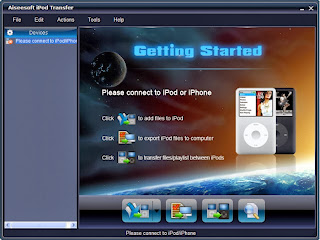Having an iPod, iPhone, or iPad does not mean that you have to use iTunes to purchase your digital music. Similarly, should you already have an existing media library that you would like to sync with an Apple device, then you definitely aren't restricted just to iTunes. Actually, there's a good deal of free iPod-friendly software on the web for managing and syncing media files for your portable. If you're having problems with iTunes, or simply fancy a change, then this listing of iTunes alternatives will show you some of the best free media software that's compatible with Apple's range of portables.
Winamp
Winamp which was first released in 1997 is really a full-featured media player. Since version 5.2, it's supported synchronizing DRM-free media towards the iPod which makes it an excellent alternative to iPod, iPhone iTunes. Gleam version of Winamp for Android-based smartphones if you would like an easy way to move your iTunes library over. The Full form of Winamp is free to use and sports lots of features that will satisfy most people's needs. However, if you would like it all, then you can go pro for any reasonable upgrade fee.
Foobar2000
Foobar2000 is really a light-weight but powerful audio player for that Windows platform. It supports a multitude of audio formats and can be accustomed to sync music to an iPod. Using optional add-on components, Foobar2000's features could be extended -- the iPod Manager add-on for instance adds the ability to transcode audio formats that are not supported by the iPod.
Amarok
Amarok is a multi-platform media player for Windows, Linux, Unix, and MacOS X os's that is a great iTunes alternative for your iPod. In addition to using it to sync your overall music library to your Apple device, you may also use Amarok to discover new music by utilizing its integrated web services -- Last.fm, Magnatune, Jamendo yet others can be accessed straight from Amarok's intuitive interface.
MusicBee
MusicBee that is available for Windows has an impressive quantity of tools for manipulating your own music library. If you're looking for an iTunes replacement that has an easy-to-use interface, and packs more features than Apple's software, then MusicBee may be worth a close look. High on the listing of features includes: extensive metadata tagging, built-in Web browser; convert audio formats and sync on-the-fly, secure CD ripping, and much more. MusicBee also has features useful for the net.
Winamp
Winamp which was first released in 1997 is really a full-featured media player. Since version 5.2, it's supported synchronizing DRM-free media towards the iPod which makes it an excellent alternative to iPod, iPhone iTunes. Gleam version of Winamp for Android-based smartphones if you would like an easy way to move your iTunes library over. The Full form of Winamp is free to use and sports lots of features that will satisfy most people's needs. However, if you would like it all, then you can go pro for any reasonable upgrade fee.
Foobar2000
Foobar2000 is really a light-weight but powerful audio player for that Windows platform. It supports a multitude of audio formats and can be accustomed to sync music to an iPod. Using optional add-on components, Foobar2000's features could be extended -- the iPod Manager add-on for instance adds the ability to transcode audio formats that are not supported by the iPod.
Amarok
Amarok is a multi-platform media player for Windows, Linux, Unix, and MacOS X os's that is a great iTunes alternative for your iPod. In addition to using it to sync your overall music library to your Apple device, you may also use Amarok to discover new music by utilizing its integrated web services -- Last.fm, Magnatune, Jamendo yet others can be accessed straight from Amarok's intuitive interface.
MusicBee
MusicBee that is available for Windows has an impressive quantity of tools for manipulating your own music library. If you're looking for an iTunes replacement that has an easy-to-use interface, and packs more features than Apple's software, then MusicBee may be worth a close look. High on the listing of features includes: extensive metadata tagging, built-in Web browser; convert audio formats and sync on-the-fly, secure CD ripping, and much more. MusicBee also has features useful for the net.





